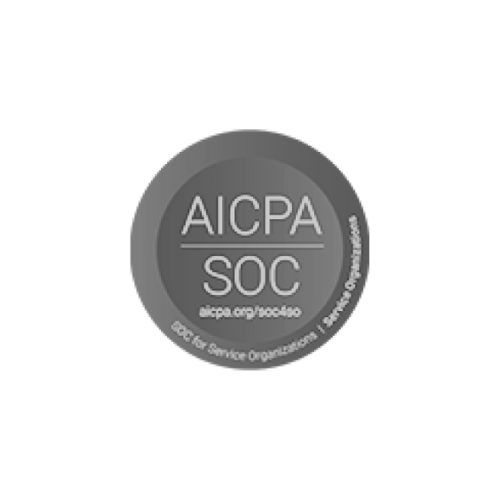In today’s competitive business landscape, companies need to be proactive in their efforts to attract and retain top talent. While traditional recruitment methods such as advertising job vacancies and using recruitment agencies have their place, they are often expensive and time-consuming. One increasingly popular option is to utilize employee advocacy and employee referral programs. By harnessing the power of their own workforce, companies can tap into a valuable resource of internal brand ambassadors capable of promoting their company culture, values, and job vacancies.
Understanding Employee Advocacy and Employee Referral Programs
Employee advocacy and employee referral programs are two important strategies that companies use to improve their brand image and recruitment efforts. Both programs rely on the power of employees as internal brand ambassadors, and when done effectively, they can help to increase brand awareness, improve customer trust and engagement, and ultimately drive sales.
Defining Employee Advocacy
Employee advocacy is the process of empowering employees to act as brand ambassadors for their company. This can involve actively promoting the company’s brand, products, or services on social media or other communication channels. By doing so, employees can help to increase the company’s visibility and reach a wider audience.
However, employee advocacy is not just about promoting the company’s products or services. It is also about building a positive brand image by sharing company culture, values, and achievements. When employees share their personal experiences and stories, they can help to build trust and credibility with customers, which can lead to increased loyalty and sales.
Defining Employee Referral Programs
An employee referral program is a recruitment strategy that encourages employees to recommend suitable candidates for job vacancies within their company. Often, these programs offer incentives for successful referrals, such as a cash bonus or other reward. By tapping into their existing workforce, companies can save time and money on recruitment while also benefiting from a higher quality of applicants.
Employee referral programs are also beneficial for employees, as they can earn rewards for referring successful candidates. Additionally, employees may feel more invested in the company’s success if they know they had a hand in bringing new talent on board.
The Connection Between the Two Programs
While employee advocacy and employee referral programs are distinct concepts, they are interconnected. Both programs rely on the power of employees as internal brand ambassadors. By empowering employees to advocate for the company, they are more likely to be aware of job vacancies and potential candidates who may be a good fit. By encouraging employees to refer suitable candidates for job vacancies, they are also promoting the company as a great place to work.
Moreover, by promoting the company’s culture, values, and achievements, employees can attract like-minded candidates who are more likely to fit in with the company culture and contribute to its success. This can lead to a more engaged and motivated workforce, which can ultimately lead to increased productivity and profitability.
In conclusion, employee advocacy and employee referral programs are powerful tools that companies can use to improve their brand image and recruitment efforts. By empowering employees to act as brand ambassadors and promoting the company as a great place to work, companies can attract high-quality candidates and build a loyal customer base.
The Importance of Internal Brand Ambassadors
Internal brand ambassadors are employees who are passionate about their company and actively promote its brand and values. These individuals are essential to building a strong brand and a positive company culture. Employee advocacy and referral programs are effective ways to harness the power of internal brand ambassadors.
Boosting Brand Awareness
One of the main benefits of employee advocacy and referral programs is the ability to increase brand awareness. By empowering employees to share their experiences and thoughts about the company with their social networks, companies can tap into a wider audience than they would be able to reach through traditional advertising methods alone. This can help to build brand credibility and earn customer trust.
For example, imagine a company that sells organic skincare products. By encouraging employees to share their personal experiences using the products and the company’s commitment to sustainability, the company can reach potential customers who value natural and eco-friendly products. This can lead to increased sales and a stronger brand reputation.
Increasing Employee Engagement
Employee advocacy and referral programs can also help to increase employee engagement. By involving employees in the company’s recruitment efforts, companies can help to foster a sense of involvement and ownership among their workforce. This can lead to increased job satisfaction, greater productivity, and a stronger sense of loyalty to the company.
Moreover, when employees feel that their opinions and contributions are valued, they are more likely to be invested in the success of the company. This can lead to a positive feedback loop, where engaged employees become more effective brand ambassadors, which in turn attracts more engaged employees.
Improving Talent Acquisition and Retention
Another significant benefit of employee advocacy and referral programs is the ability to attract and retain top talent. By tapping into their own workforce, companies can access a pool of candidates who are already familiar with the company culture and values. This can help to increase the quality of applicants and reduce the employee turnover rate.
Furthermore, when employees feel that they are part of a supportive and inclusive company culture, they are more likely to stay with the company long-term. This can help to reduce the costs associated with recruiting and training new employees.
In conclusion, internal brand ambassadors are a valuable asset to any company. By implementing employee advocacy and referral programs, companies can tap into the power of their employees to boost brand awareness, increase employee engagement, and improve talent acquisition and retention.
Implementing an Effective Employee Advocacy Program
Employee advocacy is an effective way to increase brand awareness and reach a wider audience. It involves empowering employees to share their thoughts and experiences about their company and its products or services on their personal social media channels. However, implementing an effective employee advocacy program requires careful planning and execution. Here are some tips for creating a successful employee advocacy program:
Identifying Potential Advocates
The first step in implementing an effective employee advocacy program is to identify potential advocates within the company. These are employees who are enthusiastic about the company and its products or services and are willing to share their thoughts and experiences with others. It is important to select employees who have a strong social media presence and are well-respected within their networks.
Additionally, it is important to ensure that potential advocates understand the benefits of participating in the program and are willing to commit the time and effort required to be successful advocates.
Providing Training and Support
Once potential advocates have been identified, it is important to provide them with the training and support needed to effectively promote the company. This can include educating them on the company’s brand values and messaging, helping them to develop their social media skills, and providing them with resources such as content and graphics to share on their personal channels.
It is also important to provide ongoing support to advocates, such as regular check-ins and feedback on their performance. This can help to keep advocates engaged and motivated, and ensure that they are consistently representing the company in a positive and effective way.
Establishing Clear Guidelines and Expectations
It is also important to establish clear guidelines and expectations for employee advocacy. This can include guidelines on appropriate language and messaging, expectations for levels of participation, and guidelines for measuring and evaluating program performance.
Clear guidelines can help to ensure that advocates are representing the company in a consistent and appropriate way, and can also help to mitigate any potential risks or issues that may arise. Additionally, clear expectations can help to motivate advocates and ensure that they are aware of what is expected of them in terms of participation and performance.
Overall, implementing an effective employee advocacy program requires careful planning, execution, and ongoing support. By identifying potential advocates, providing training and support, and establishing clear guidelines and expectations, companies can create a successful employee advocacy program that can help to increase brand awareness, reach a wider audience, and drive business results.
Developing a Successful Employee Referral Program
Employee referrals are a valuable source of top-quality candidates for any organization. Not only do they tend to be a good fit culturally, but they also tend to have a higher retention rate than candidates sourced through other channels. Developing a successful employee referral program can help organizations tap into this valuable resource and build a strong talent pipeline.
Creating an Attractive Incentive Structure
One of the key elements of a successful employee referral program is the incentive structure. Offering attractive rewards such as cash bonuses or extra vacation time can help to motivate employees to participate in the program and refer top-quality candidates. However, it is important to ensure that the incentives are tailored to the specific needs and preferences of the employees. For example, some employees may prefer non-monetary incentives such as recognition or the opportunity to work on a special project.
It is also important to communicate the incentive structure clearly and regularly to employees. This can involve creating a dedicated section on the company intranet or sending out regular email updates to keep employees informed about the program and any changes to the incentive structure.
Streamlining the Referral Process
Another important consideration when developing a successful employee referral program is to ensure that the referral process is streamlined and user-friendly. This can involve providing employees with an easy-to-use referral portal or implementing a software solution to automate the process.
It is also important to provide employees with clear guidelines on the types of candidates that are a good fit for the organization. This can involve creating a list of desired skills and qualifications or providing examples of successful hires made through the referral program.
Measuring and Evaluating Program Performance
To ensure ongoing success, it is important to regularly measure and evaluate program performance. This can involve tracking metrics such as the number of referrals received, the quality of referrals, and the cost per hire. These metrics can then be used to refine and improve the program over time.
It is also important to solicit feedback from employees on the program and any areas for improvement. This can involve conducting regular surveys or focus groups to gather input and suggestions.
By creating an attractive incentive structure, streamlining the referral process, and regularly measuring and evaluating program performance, organizations can develop a successful employee referral program that helps to build a strong talent pipeline and drive business success.
Integrating Employee Advocacy and Referral Programs
Employee advocacy and referral programs are two effective strategies that companies use to attract top talent and improve employee engagement. These programs are often implemented separately, but integrating them can lead to even greater success. In this article, we will explore some key considerations for integrating employee advocacy and referral programs.
Aligning Program Goals and Objectives
The first step in integrating employee advocacy and referral programs is to align their goals and objectives. This means identifying shared targets such as increasing the number of hires, improving employee engagement, and enhancing the company’s brand reputation. By working towards these targets collectively, the programs can have a greater impact on the company’s overall recruitment and retention efforts.
For example, an employee advocacy program may aim to increase social media engagement and brand awareness, while a referral program may aim to increase the number of high-quality candidates. By aligning these goals, the two programs can work together to achieve a shared objective, such as attracting more top talent through social media referrals.
Encouraging Cross-Program Collaboration
Another important consideration when integrating employee advocacy and referral programs is to encourage cross-program collaboration. This means promoting employee advocates to refer potential candidates and vice versa, as well as sharing success stories and resources across both programs.
For example, an employee advocate may share a job posting on social media and encourage their network to apply. A referral program participant may refer a candidate to the company and also share the job posting on their social media channels. By encouraging this type of collaboration, the two programs can work together to attract more high-quality candidates.
Leveraging Technology to Enhance Program Integration
Technology can also play a critical role in integrating employee advocacy and referral programs. By leveraging tools such as social media management platforms and referral software, companies can more easily manage both programs and ensure that they are working towards shared goals.
For example, a social media management platform can be used to track the success of employee advocacy efforts and identify potential candidates who have engaged with the company’s social media content. Referral software can be used to track the success of referral program participants and provide incentives for successful referrals.
In conclusion, integrating employee advocacy and referral programs can lead to even greater success in attracting top talent and improving employee engagement. By aligning their goals and objectives, encouraging cross-program collaboration, and leveraging technology, companies can create a more cohesive and effective recruitment and retention strategy.
Case Studies: Companies Excelling in Employee Advocacy and Referral Programs
Company A: A Comprehensive Approach to Employee Advocacy
Company A understands the importance of employee advocacy in today’s digital age, where social media has become a powerful tool for brand building and customer engagement. The company has implemented a comprehensive employee advocacy program that includes regular training sessions to educate employees on the latest social media trends and best practices.
In addition, Company A has created a centralized content hub where employees can easily access and share pre-approved content, ensuring that all social media posts are on-brand and consistent. The company also uses employee advocacy software to track and measure the impact of its program, allowing it to make data-driven decisions and continuously improve its strategy.
As a result of these efforts, Company A has seen a significant increase in social media engagement and brand awareness. Its employees have become powerful advocates for the company, sharing its message with their personal networks and helping to attract new customers and talent.
Company B: Maximizing Employee Referrals Through Incentives
Employee referrals are a valuable source of high-quality talent, and Company B has recognized this by implementing a highly successful employee referral program. The program includes a generous incentive structure for successful referrals, including cash bonuses and other rewards.
By offering these incentives, Company B has been able to attract top talent at a lower cost than traditional recruitment methods. In addition, the program has helped to improve employee engagement and retention, as employees feel valued and appreciated for their contributions to the company’s growth.
Company B’s commitment to its employee referral program has paid off, as it has been able to build a strong team of talented individuals who are committed to the company’s mission and values.
Company C: Seamless Integration of Advocacy and Referral Programs
Company C understands that employee advocacy and referral programs are two sides of the same coin, and has taken a strategic approach to integrating these programs. By leveraging technology and encouraging cross-program collaboration, the company has been able to maximize the impact of both programs.
For example, Company C uses its employee advocacy program to share job postings and other recruitment-related content with employees, who can then share it with their personal networks. This has helped to increase the reach of the company’s job postings and attract a wider pool of candidates.
In addition, Company C’s referral program is seamlessly integrated with its advocacy program, making it easy for employees to refer their friends and colleagues for open positions. This has helped to improve the quality of the company’s hires, as employees are more likely to refer individuals who they believe will be a good fit for the company culture.
Overall, Company C’s approach to integrating its advocacy and referral programs has resulted in a streamlined and effective recruitment process, helping the company to attract and retain top talent.
Overcoming Challenges and Obstacles
Employee advocacy and referral programs have become increasingly popular in recent years, as companies recognize the value of having their own employees promote their brand and products on social media. However, there are still several challenges and obstacles that companies must overcome to ensure the success of these programs.
Addressing Common Concerns and Misconceptions
One common concern among employees is the risk associated with promoting their company on social media. They may worry about the potential backlash from customers or negative consequences from their employer. To address these concerns, it is important for companies to provide their employees with the necessary training and resources to participate in the program safely.
Companies can also address misconceptions that employees may have about the program. For example, some employees may think that they need to have a large social media following to be successful in the program. However, companies can highlight the fact that even employees with a small following can make a big impact by sharing content with their close network.
Ensuring Compliance with Legal and Ethical Guidelines
Another challenge that companies face is ensuring that their employee advocacy and referral programs comply with legal and ethical guidelines. This includes making sure that employees do not make false or misleading claims about the company or its products or services.
Companies can ensure compliance by providing employees with clear guidelines and policies for participating in the program. They can also monitor employee activity on social media to ensure that they are following the guidelines and not engaging in any unethical behavior.
Maintaining Program Momentum and Engagement
Once a company has implemented an employee advocacy and referral program, it is important to maintain program momentum and engagement to ensure its ongoing success. One way to do this is by rewarding top-performing advocates and recognizing successful referrals.
Companies can also regularly monitor and evaluate program performance to identify areas for improvement and make adjustments as needed. By doing so, they can continue to drive employee engagement and ensure that their program is making a positive impact on their brand and bottom line.
The Future of Employee Advocacy and Referral Programs
The Role of Technology and Social Media
The future of employee advocacy and referral programs is closely tied to evolving technology and social media trends. As new platforms and tools become available, companies will need to adapt their programs accordingly to ensure maximum impact.
Evolving Best Practices and Strategies
The best practices and strategies for employee advocacy and referral programs are also likely to continue to evolve. Companies will need to stay up-to-date with the latest trends and techniques to ensure that their programs remain effective and competitive.
Preparing for the Next Generation of Internal Brand Ambassadors
The next generation of employees will bring their own unique skill sets and experiences to employee advocacy and referral programs. Companies must be proactive in developing programs that are relevant and appealing to younger employees if they wish to continue to tap into the power of internal brand ambassadors.
Overall, employee advocacy and referral programs represent a powerful tool for companies looking to attract and retain top talent in today’s competitive business landscape. By tapping into the power of their own workforce, companies can build stronger brands, improve employee engagement, and drive business performance.
















